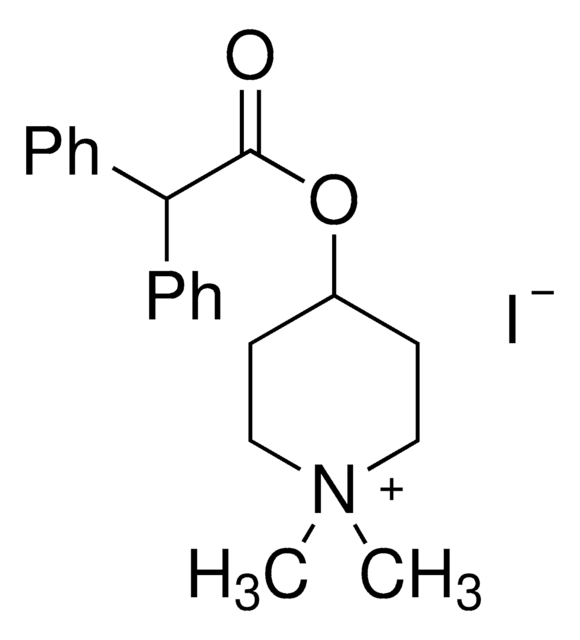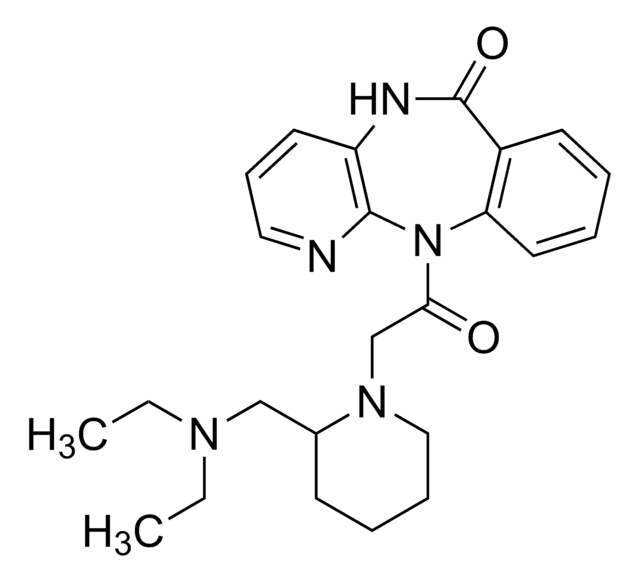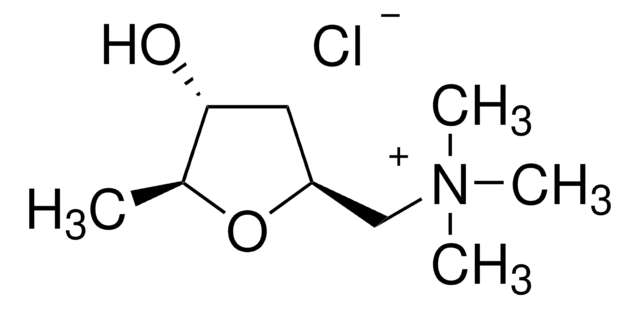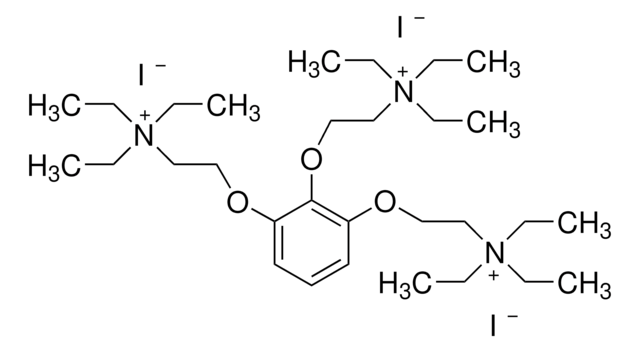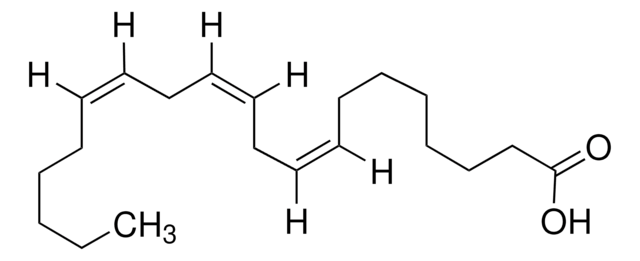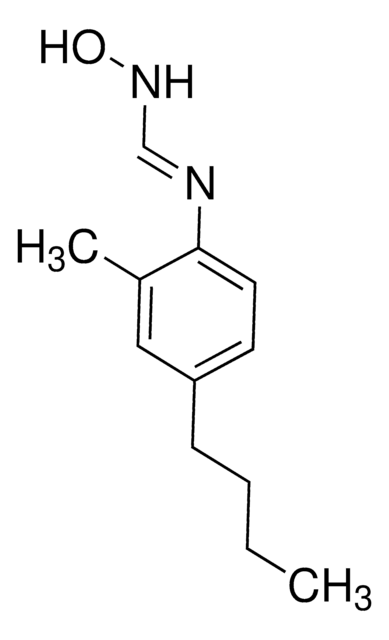H127
p-Fluorohexahydro-sila-difenidol hydrochloride
powder, ≥98% (HPLC)
Sinônimo(s):
Cyclohexyl-(4-fluorophenyl)-(3-N-piperidinopropyl)silanol hydrochloride, P-F-HHSiD hydrochloride
About This Item
Produtos recomendados
Nível de qualidade
Ensaio
≥98% (HPLC)
Formulário
powder
cor
white to beige
solubilidade
H2O: slightly soluble 1.5 mg/mL
45% (w/v) aq 2-hydroxypropyl-β-cyclodextrin: >14 mg/mL
ethanol: soluble
cadeia de caracteres SMILES
Cl[H].O[Si](CCCN1CCCCC1)(C2CCCCC2)c3ccc(F)cc3
InChI
1S/C20H32FNOSi.ClH/c21-18-10-12-20(13-11-18)24(23,19-8-3-1-4-9-19)17-7-16-22-14-5-2-6-15-22;/h10-13,19,23H,1-9,14-17H2;1H
chave InChI
JMTYYLMGSBSPPK-UHFFFAOYSA-N
Informações sobre genes
human ... CHRM3(1131)
Aplicação
- as the M3/muscarinic acetylcholine receptor antagonist to study its involvement in carbachol induced Egr-1 biosynthesis using human neuroblastoma cells
- as M3 receptor antagonist to test its involvement on N,N-diethyl-m-toluamide (DEET)-induced angiogenesis in human umbilical venous endothelial cells (HUVEC)
- in a study to examine the role of aclidinium on human fibroblast to myofibroblast
Ações bioquímicas/fisiológicas
Características e benefícios
Código de classe de armazenamento
11 - Combustible Solids
Classe de risco de água (WGK)
WGK 3
Ponto de fulgor (°F)
Not applicable
Ponto de fulgor (°C)
Not applicable
Equipamento de proteção individual
Eyeshields, Gloves, type N95 (US)
Escolha uma das versões mais recentes:
Já possui este produto?
Encontre a documentação dos produtos que você adquiriu recentemente na biblioteca de documentos.
Nossa equipe de cientistas tem experiência em todas as áreas de pesquisa, incluindo Life Sciences, ciência de materiais, síntese química, cromatografia, química analítica e muitas outras.
Entre em contato com a assistência técnica

